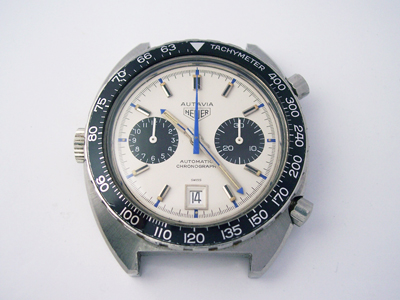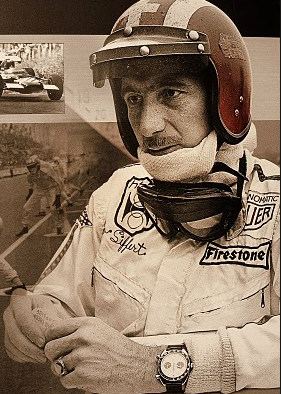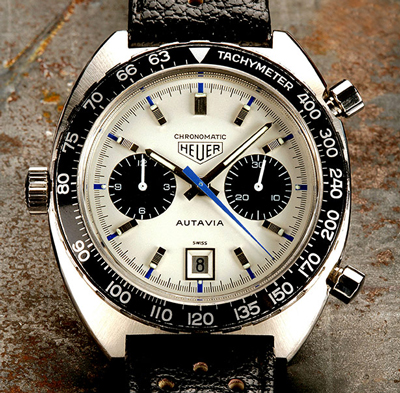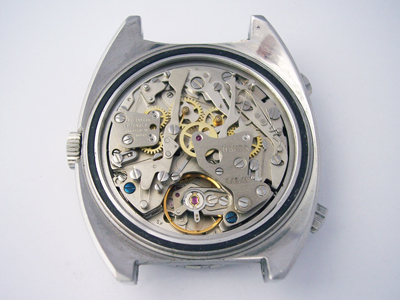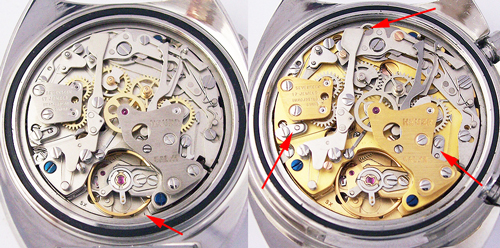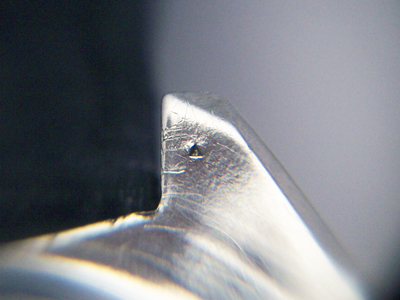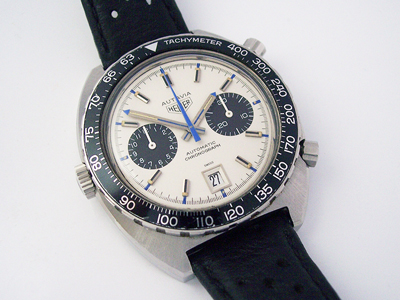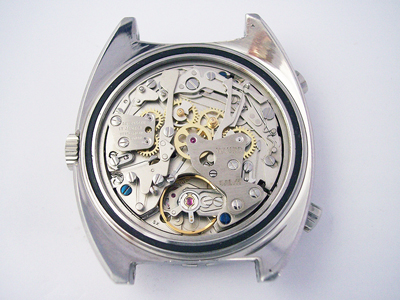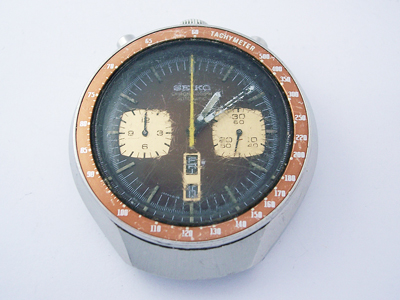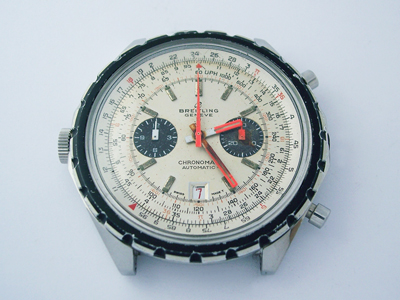Another classic Heuer on the blog, this time it’s a Siffert Autavia.
(Click pictures to enlarge)
Instantly recognisable by its white dial, black subdials and blue highlights, this watch is known in the Heuer community as the ‘Siffert’ as it was the model worn by the Swiss racing driver Jo Siffert.
From the 1950’s onwards Heuer had strong links with motor racing, initially providing timing equipment for races, and later as a personal and team sponsor. Throughout the 1970’s in particular the Heuer logo can be seen on the cars and race suits of many legendary drivers; Niki Lauda, Jochen Rindt, Jody Scheckter and Derek Bell to name just a few.
Jo Siffert was the first driver to receive a personal sponsorship contract from Heuer when he became an ambassador for the brand in 1969. The move was well orchestrated as 1969 was also the year that Heuer released (arguably) the first automatic chronograph to market, and Jo Siffert was filmed and photographed extensively, both on and off the circuit, wearing a white dialled Autavia Chrono-Matic.
Although referred to as such, the watch in this post is not a true Siffert, but a third generation model with several differences from the original, namely; the hands are wider and have a blue stripe, the dial markers have been re-designed, the hour register is numbered from 1 to 12, and the word “Chrono-Matic” disappeared from the dial in later models.
The watch arrived in working order and opening the caseback revealed a Heuer cal. 11-I in decent condition.
In the rush to bring the first automatic chronograph to market, Heuer released the cal. 11 before it had been fully developed which resulted in a revised version, the cal. 11-I being introduced just a few months later. The 11-I is recognisable by an ‘I’ stamped on the mainplate underneath the balance (see below).
The 11-I introduced some technical improvements over the original calibre, specifically a ‘slow roll’ date change mechanism, a thinner mainspring, and an all steel oscillating pinion. However, even with these changes it was still not technically perfect as the calibre was revised for a final time in 1971 to become the cal. 12 seen in the majority of Heuer’s 1970’s chronographs. Here are the cal. 11-I and 12 side by side;
Of the visible changes the most obvious is the difference in plating, the mainplate and bridges of the cal. 12 being rhodium rather than nickel plated. Other visible changes include the jumper springs for the hour and minute registers which were re-designed to remove the micro-adjustment slot, and were also made thinner/lighter, needing less power to move the registers forward.
The reset hammer was also re-developed as in the original design the hammer cam jumper could jump out of place and render the chronograph inoperable. The new design provided a cover plate to prevent this from happening, but needed an oiling hole to allow correct lubrication during servicing.
There were also a number of non-visible changes, the most significant being the increase in beat rate from 19,800 bph to the industry standard rate of 21,600 bph which meant the re-development of all the train wheels and the escapement.
One last thing to note is that any watch with an cal. 11-I inside is marked on the back of one of the lugs with either arrows or a star, this watch being no exception.
With no cosmetic work to take care of the job was quickly turned around this time. With the movement serviced and the case cleaned, here’s the watch all back together again.
Rich.
** Many thanks to Rod Aitchison for letting me feature his watch on the blog. **

